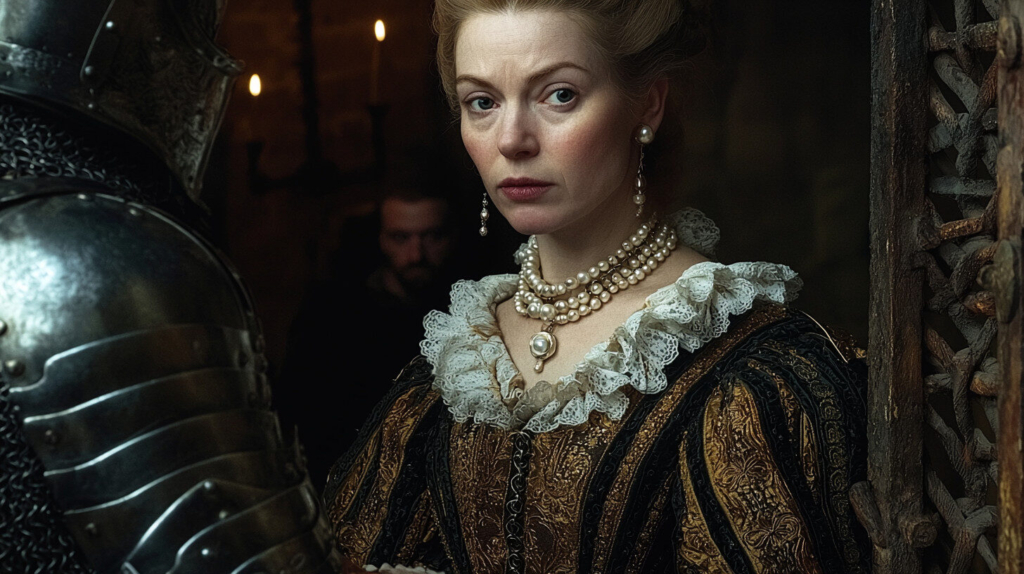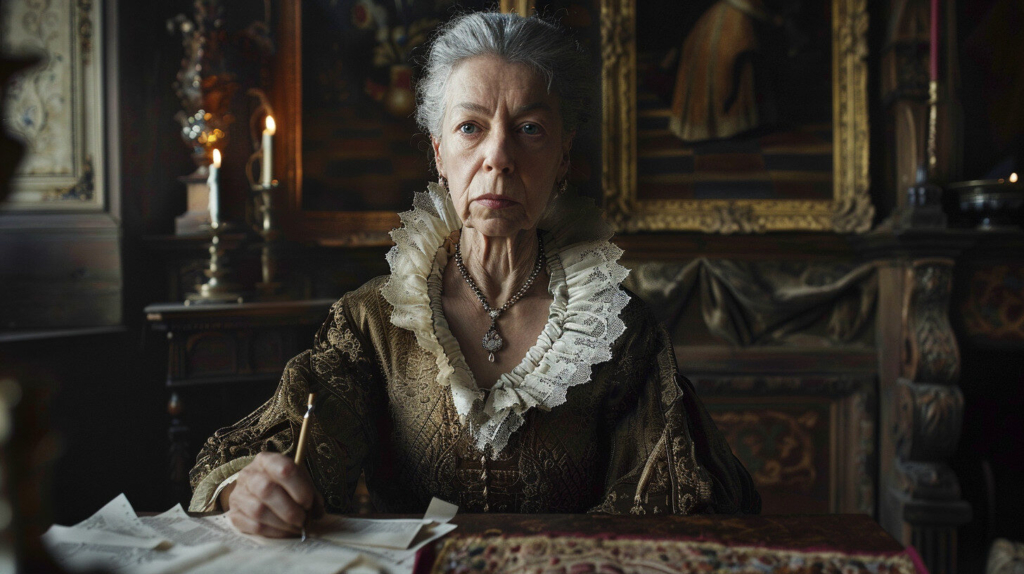We have follwed the headstrong princess Cecilia Vasa from her rebellious adolescence to her adventures in England, which she left in haste in 1566, hunted by creditors.
In the 1560s religious tension was runnig high in Europe. Cecilia’s new home in Baden-Rodemachern was being torn apart by opposing forces of Protestants and Catholics. As if that was not enough, Cecilia and her husband Christopher was involved in an inheritance dispute with his family.
At the end of the decade Cecilia began to fear for her family’s safety, and wrote her brother Johan – who had been released from prison, dethroned his brother and became king Johan III – and asked him for a sanctuary in Sweden. In 1571, she was back on Swedish soil with her family, which had been expanded by two more sons, Filipp and Karl.
Cecilia and her husband were heavily indebted. And they seemed to have marrital issues. After receiving another son – Johan Karl – in 1572, Christopher left Sweden and returned to Baden-Rodemachern, and the couple would never see each other again.
To support his sister, king Johan gave her the city of Arboga and its royal estate, and she began calling herself Countess of Arboga. The revenue was not enough to pay of her debts however, and she turned to piracy to increase her income. She was granted the right to hijack ships in the Baltic Sea by her brother, as a means of disrupting enemy ships – a common practice at this time.

But Cecilia wasn’t satisfied with attacking enemies, and soon began hijacking non-hostile ships, such as Danish vessels. This led to a diplomatic crisis between Sweden and Denmark – and between Cecilia and her brothers Johan and Karl.
Karl and Cecilia would also hijack each others ships and steal from each other. She also sold grain and guns to hostile nations – which made Johan take back half of her estates in Sweden.
The relationship between Cecilia and the king became so tense that it is even suggested that she was involved in a plot to have him killed. The plot failed, and though there was no proof of Cecilia’s involvement, Johan never trusted her again.
In 1575 Cecilia’s estranged husband died. Even though her marriage contract stated that she would be regent of in Baden-Rodemachern if her son was still underage, her husband’s relatives took control of his lands.
In 1578 she formed a friendship with an ambassador from Spain, Fransisco de Eraso, and probably as a strategy to gain allies against her husband’s Protestant relatives, she converted to Catholicism. Through the ambassador, she found an ally in Filip II of Spain. But her brothers did not appreciate this alliance, and Johan eventually put Eraso in prison, and forbade Cecilia to have any further contact with him.

However, being Cecilia Vasa, she bribed her way to see him in July 1579. And presumably they did more than talk, because the following year Cecilia gave birth to a daughter, Charitas. Sadly, she was not allowed to keep her daughter, who was taken from her and brought up at a convent.
By then, Cecilia had already left Sweden and returned to Baden-Rodemachern to champion her son’s cause. The dispute wasn’t settled until the end of the 1580s however, when her eldest son Edvard Fortunatus inherited the whole of Baden-Baden from a childless cousin. Unfortunately, he was just as bad as his parents in handling money, and so the financial troubles continued.
In the 1590s new hostilities broke out between Cecilia’s family and her late husbands protestant relatives, who occupied Baden – which made her financial situation worse than ever. She is described in contemporary documents as ”poor and burdened with grief”.

Although aging, Cecilia was not one to keep still and quiet, and she kept fighting for her rights and the rights of her sons. She wrote to many Catholic monarchs, and even the Pope, who often sided with her in the conflict with her husbands family. Unfortunately, it didn’t change anything in practice, but shows that she still had contacts and influence.
Cecilia didn’t just have influential friends, but also powerful enemies, who did their best to slander her. One such tale is how Cecilia supposedly ran a brothel in Antwerp, and that her son Edvard Fortunatus dragged her by her hair, kicking and screaming, away. Though not true, the story has survived to this day.
In 1618, at the age of 78, her delapidated castle in Rodemarchern was siezed by creditors, and she escaped in a carriage to try and plead her cause with the Archbishop of Trier. When she was chased, she literally jumped out of the carriage and ran until she reached safety in Lorraine.

With the outbreak of the 30-years-war the same year, her husband’s protestant relatives were deposed by the catholic imperial army, and her grandson was restored to the family estates and they were given a compensiation for the long occupation.
So the last few years of her life, Cecilia could finally live in somewhat peace and prosperity. Sadly, she had by then lost all her sons. But a ray of light was that at the end of her life, she found her long lost daughter, Charitas, and they could finally be reunited.
Cecilia Vasa died on January 27, 1627, at the respectable age of 86. She had lived a long and eventful life, which unfortunately is often forgotten in history.
And with Cecilia’s death, this theme of Forgotten Royal Women is coming to an end. Thank you for joining me on this journey of rediscovering these amazing women and their stories!
Sources:
Carlstedt, Anna. Renässans-rebeller – från Cecilia Vasa till kung Kristina. (2020)
Tegenborg Falkdalen, Karin. Vasadöttrarna. (2010)

